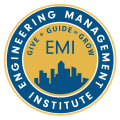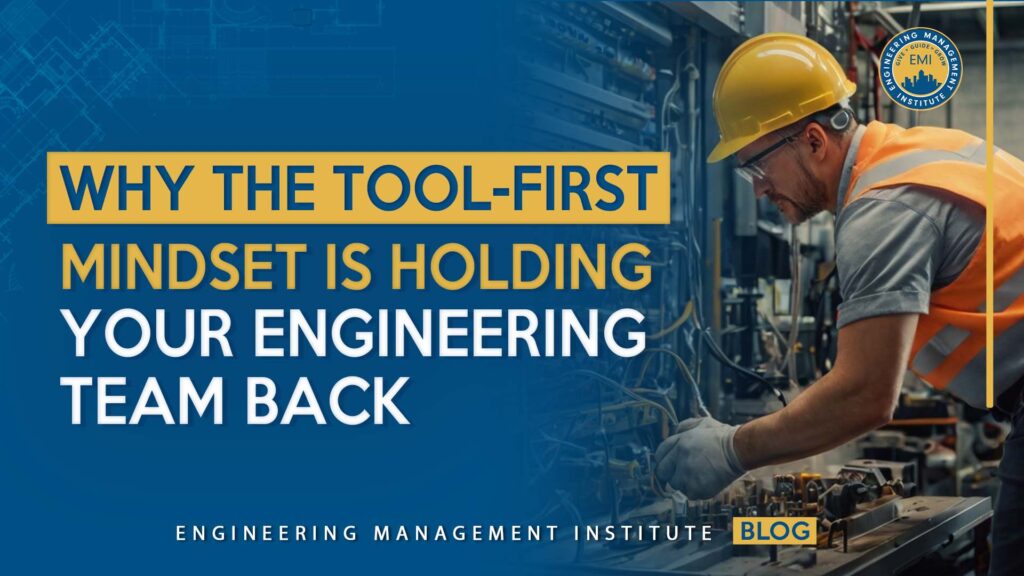Engineering professionals love tools. Many of us (myself included) spent our early career years chasing the latest software or gadget, convinced that mastering these tools was the key to success. I remember obsessing over new software and automation scripts, believing that if I just found the right tool, our projects would practically manage themselves. This tool-first mindset is common among early-career engineers—after all, universities and entry-level roles train us to use technical tools but rarely expose us to higher-level strategy or business processes. It’s no surprise, then, that we gravitate toward technology as a silver bullet, often without realizing everything else that goes into running a business.
Even the most advanced tool will fall flat if it’s not supported by the right people and processes. In fact, studies have shown that around 70% of digital transformation initiatives fail to meet their goals, largely because organizations fixate on new technology while neglecting cultural and process changes. In our industry, we’ve all heard the refrain that architecture and engineering firms are slow to adopt technology, but the reality is more nuanced. As stated in a previous article of mine, the issue isn’t a reluctance to embrace new tools—it’s a misalignment between people, process, and technology.
The Tool-First Mindset Trap (and Why It’s So Common)
Why do so many of us fall into the tool-first mindset trap, especially early in our careers? One reason is that tools are tangible and exciting—it feels productive to install new software or a gadget that promises to streamline our work. Early-career engineers, who are also often “digital natives,” are especially prone to this. We enter the workforce fluent in technology and eager to apply it. In fact, many young engineers even choose employers based on the tech they use, viewing cutting-edge tools as a sign of an innovative workplace. There’s nothing wrong with enthusiasm for technology; it can drive positive change. However, without guidance, that enthusiasm can morph into a tool-centric worldview where we see technology as the answer to every problem. When all you have is a hammer, everything looks like a nail.
Another factor is limited exposure to strategy and process in our early years. Junior engineers are usually tasked with specific technical assignments—designing a beam, coding a script, or modeling a site—and rarely invited to high-level discussions about business goals or workflows. I can relate: in my first years, I wasn’t thinking about why our company’s process was the way it was or how our projects made money. I focused on executing tasks with the tools I knew. This narrow focus meant I wasn’t considering whether the process itself was efficient or if the tool actually fit the problem. Many young engineers simply don’t know what they don’t know about process improvement or strategic alignment—so they default to what they do know: tools.
Ironically, this tool-first mindset can lead to “digital decoration,” where technology is layered on top of broken or inefficient processes without solving the underlying issues. We might automate a bad process and just end up doing the wrong things faster.
For example, consider a firm that buys expensive project management software but hasn’t defined its project workflow clearly—the software will likely be underutilized or misused because the process chaos remains. The allure of a tool’s features can blind us to the preparation needed to leverage it effectively.
People and Process: The Strategic Foundation Before Technology
A solution to the tool-first mindset trap is to focus on the core of your business: people and process before selecting any technology. In practical terms, this means understanding how your business or project operates and what the needs are. Who will use the tool, and do they have the right skills? How does information flow through your team? Where are the bottlenecks or pain points? These questions must guide any tech adoption.
In my experience, successful engineering firms start by examining or even mapping their processes at a high level. They ensure organizational goals and workflows are clearly defined. A great process will reveal the tool that is needed (if any), backed with feedback from the people who will ultimately be the end users. Conversely, a cool tool without a very specific purpose can create more problems than it solves. I refer to this situation as a “solution in search of a problem,” when we get excited about technology without a clear use case. The better approach is problem-first, not tool-first. Define the problem, design the process, then pick the technology that fits.
Industry research reinforces this point. One analysis of automation failures found that many companies choose tools before understanding their processes or objectives, leading to disappointing results. The recommendation was straightforward: “You need strategy, process understanding, and clear goals before selecting tools. The shiniest platform won’t fix poor planning.” In other words, strategy must guide tool adoption—not the other way around.
Focusing on people and process first also means considering the human side of technology change. Any tool is only as effective as the people operating it and the process in which it’s embedded. If the team isn’t trained or bought into the change, even the best software will sit on the shelf. Lack of training and change management is one of the most common reasons new tech implementations fail.
Finally, aligning tech with processes helps ensure you’re solving business problems. By mapping out how work gets done (for example, using process maps or flowcharts), you gain clarity on where inefficiencies or gaps exist. One A/E firm study noted that firms with documented and standardized processes tend to be far more efficient and even more profitable than those without—in fact, the most profitable firms are nearly twice as likely to invest in process standardization and operational systems.
The Iron Man Analogy: Tony Stark, J.A.R.V.I.S., and the Suit
To illustrate the interplay of people, process, and technology, I often turn to an analogy from Marvel’s Iron Man. Think of your engineering firm or project like Iron Man in action:
- People are Tony Stark, the human visionary behind the innovation. Just as Tony’s intelligence and creativity drive the suit, your team’s expertise and decision-making drive your projects. People—their skills, communication, and leadership—are at the core of every successful endeavor.
- Process is J.A.R.V.I.S., the AI assistant that quietly powers every decision and keeps Tony Stark informed. In our world, the process is the system or workflow that guides how work is done step by step.
- Technology is the Iron Man Suit, the powerful armor loaded with tools and capabilities. It gives Tony superhuman abilities—but notice, the suit alone is useless without Tony to control it and J.A.R.V.I.S. to support it.
I previously summed this up as: “Remember, the true strength of Iron Man isn’t the suit itself but the person inside. Similarly, the real power of your firm lies not in the technology alone, but in the synergy of dedicated people, clearly defined processes, and strategically selected technology.”.
In Summary…
- “Problems Worth Solving”: Define the business problem before choosing a tool.
- Understand Your Processes: Map workflows and bottlenecks.
- Train Your People: The best tech fails without proper and ongoing training.
- Let Strategy Guide Tools: Align with business needs and goals. “Problem in search of a tool”—not the other way around.
- Think Like Iron Man: Empower your team (Tony), build smart processes (J.A.R.V.I.S.), then suit up with tech that fits.
Sources:
Andre Ripla, “Digital Tools vs. Digital Thinking,” LinkedIn, 2025.
Nick Heim, “The Iron Man Framework for Innovation,” The Zweig Letter, 2025.
Nick Heim, “People, Process, and Technology: Mapping the Future of Your A/E Firm’s Success,” BQE Blog, 2025.
Skan AI, “Top Ten Reasons Why Automation Efforts Fail,” Skan.ai Blog, 2025.
AlterSquare, “Overcoming Adoption Barriers: Getting AEC Professionals to Embrace New Technology,” Medium, 2025.
AEC PM Certification
AEC PM Connect
Project Management Accelerator™
Engineering Leadership Accelerator™
Keynote Speaking
About the Author: Nick Heim, P.E.

Nick’s interests lie at the intersection between the built world and technology, and he can be found looking for the ever-changing answer to the question, “How can we do this better?” Nick can be found on LinkedIn, producing content about the use of technologies in his civil engineering career and small business.






